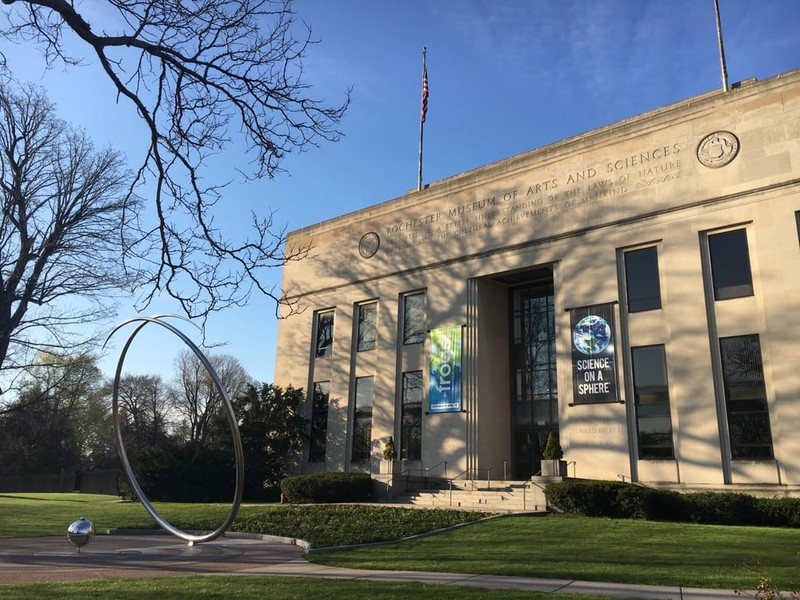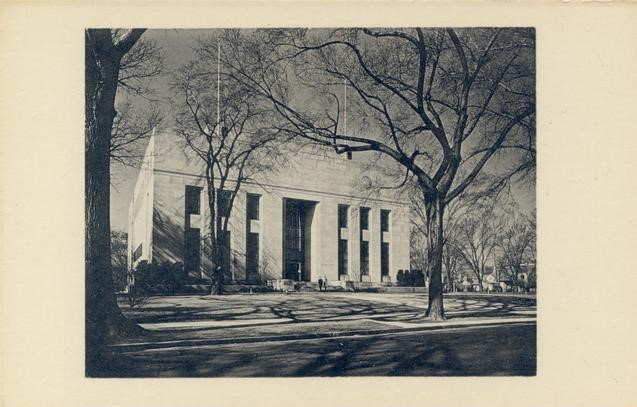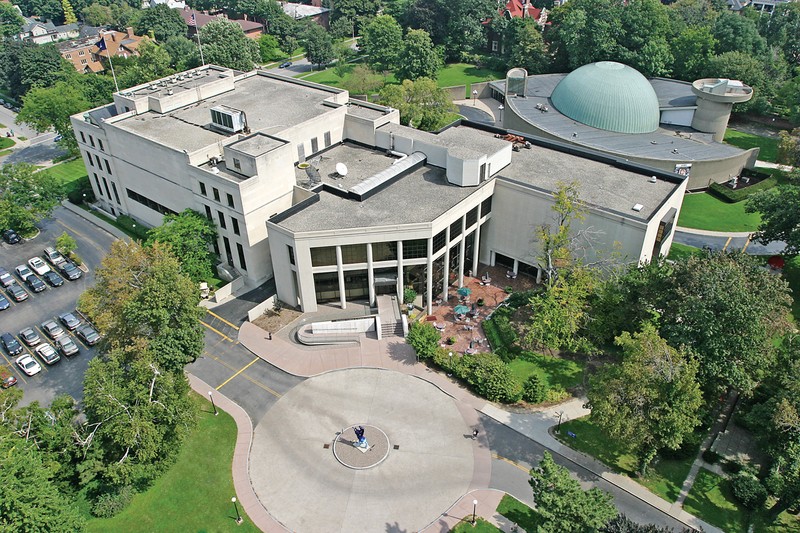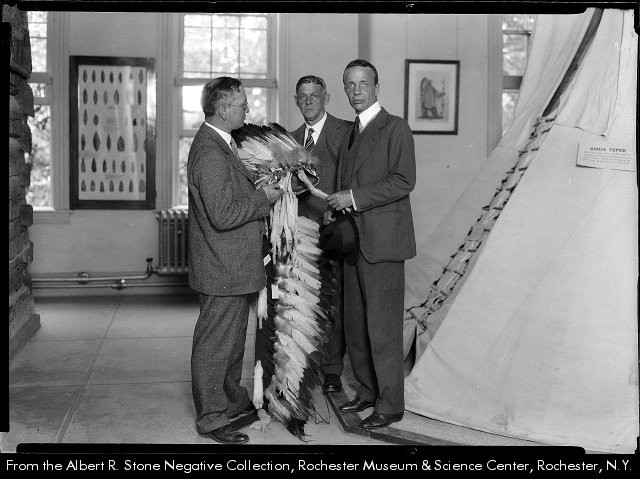Rochester Museum and Science Center
Introduction
Text-to-speech Audio
Images
Rochester Museum & Science Center today

Rochester Museum of Arts and Sciences in the mid-20th century

Aerial view of the Rochester Museum & Science Center

One of the two mastodon skeletons on display at the museum
.jpg)
Dr. Arthur Caswell Parker, the museum's first director, in 1924

(left to right) museum director Dr. Arthur Parker, museum curator Harry Wardell, and Theodore Roosevelt Jr. hold a feather headdress at the Rochester Municipal Museum (circa 1927)

Backstory and Context
Text-to-speech Audio
The Rochester Museum & Science Center was originally founded by a city ordinance in 1912 as the Rochester Municipal Museum- a museum "dedicated to providing a permanent repository” for local "relics". Edward D. Putnam was appointed as the museum's first curator the following year. He served in this position until his retirement in 1924. Overall management of the museum fell under the purview of the Public Library Board until 1925, when the Rochester Municipal Museum became its own City Department complete with commissioners.
Following the retirement of the museum's former curator in 1924, Dr. Arthur C. Parker- an archaeologist and expert on Native American history- took the position as museum director later that year. The leadership of Parker, who conceptualized museums as the "university of the common man", was extremely influential in cementing the museum's future. Parker, who was part-Native American himself, was passionate about creating a museum that regularly interacted with historical societies and organizations- particularly ones that had to do with Native American history and culture. In 1935, Dr. Parker acquired funding from the Works Progress Administration- a New Deal Program- to launch the Indian Arts Project, which lasted until 1941. The project employed members of the Tonawanda and Cattaraugus Reservations to create artistic representations of their daily lives. These art pieces are still held in the museum's collection today. Parker also oversaw the construction of Bausch Hall for the museum, and grew the general collection until his retirement in 1945, a decade before his death.
Thanks to Parker's work, the museum's name was changed to the Rochester Museum of Arts and Sciences in 1930 in order to reflect the growing scope of the exhibits being displayed there. The position of museum director was filled in 1945 by Parker's successor, W. Stephen Thomas. Thomas worked tirelessly to expand the Museum's collection even further. In 1968, after the opening of the Strasenburgh Planetarium, the museum's name was again changed to its current title- the Rochester Museum & Science Center. The same year, the City of Rochester handed over operations completely to the museum's Board of Trustees and the museum was established as a private, non-profit educational institution.
The Rochester Museum & Science Center grew substantially during the late 20th century. In 1978, the 400-seat Eisenhart Auditorium was opened to the public. Two years later, the adjacent Columbia School for Girls was purchased by the museum, renovated, and then reopened as the Gannett School building. The largest project, however- the 900 acre Cumming Nature Center located near Naples, forty miles away- was completed in 1982. Established to promote environmental education, the Cumming Nature Center offers 6 miles of trails as well as an interactive visitors center.
Today, the Rochester Museum & Science Center contains a total of 1.2 million items, ranging from local history to ancient artifacts and mastodon skeletons. The museum's 60,000 square-feet of interactive exhibits include a submarine ride simulator, rock climbing walls, and giant-screen films about space in the Strasenburgh Planetarium.
Sources
Rochester Business Journal Staff. Rochester Museum & Science Center: Making history, Rochester Business Journal. September 21st 2012. Accessed November 19th 2020. https://rbj.net/2012/09/21/rochester-museum-science-center-making-history/.
RMSC. About the Collections: History of the Museum, RMSC LibCat. Accessed November 19th 2020. http://collections.rmsc.org/LibCat/collections.html.
Rochester Museum & Science Center. History of the Rochester Museum & Science Center, RMSC. Accessed November 19th 2020. https://rmsc.org/about/history.
The Living New Deal. Museum and Science Center Indian Arts Project- Rochester NY, The Living New Deal . Accessed November 19th 2020. https://livingnewdeal.org/projects/museum-and-science-center-indian-arts-project-rochester-ny/.
https://catalogplus.libraryweb.org/?section=resource&resourceid=1116149818¤tIndex=3&view=fullDetailsDetailsTab
https://commons.wikimedia.org/wiki/File:RMSC.jpg
https://www.fingerlakes.org/attractions/rochester-museum-science-center-rmsc-and-strasenburgh-planetarium
